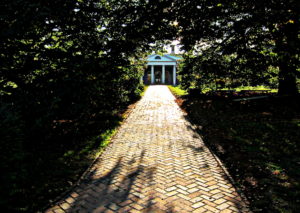The Heartless Math of ‘Carsonomics’
Less is not more with Ben Carson leading the Department of Housing and Urban Development. Ben Carson, now the secretary of housing and urban development, in 2015 during his run for the GOP nomination for president. (John Locker / AP)
Ben Carson, now the secretary of housing and urban development, in 2015 during his run for the GOP nomination for president. (John Locker / AP)
I lived in one of London’s first council housing projects after World War II. That experience showed me how a country (the United Kingdom, in this case) could create affordable housing and maintain a nice aesthetic, using social architecture to benefit both society and building inhabitants.
In 1952, the architects Chamberlin, Powell & Bon built the Golden Lane Estate in London on top of a bombed-out site. They sought to imbue the city with an architectural model of social housing that was utilitarian, functional and beautiful. Influenced by Le Corbusier, Mies van der Rohe, Frank Lloyd Wright and Ludwig Hilberseimer, the modernism of this structure is to London what Unité d’habitation is to Marseille in France.
These estates in the U.K. have nothing in common with the American model of social housing—often called “projects”—which are, if anything, the nightmarish antithesis to the British ideal of social housing. The American model of social housing is related to the gentrification of cities. This keeps certain types of people outside of certain parts of town and makes land accessible/affordable for an elite class.
But this practice is not new. With the establishment of the National Housing Act of 1934, both the Federal Housing Administration and the Federal Home Loan Bank Board were created in the same year, and the abuse known as “redlining” was born. Redlining is the way key services (e.g., home loans, insurance) are denied or when costs are raised for residents of a specific geographical area. These actions resulted in black neighborhoods being deemed unsafe and unwise investments. Hence, it was next to impossible for African-Americans to get loans. This helped to concentrate poverty in certain neighborhoods. When social housing was constructed, these “projects” became pockets of poverty, segregation and forced underdevelopment. Growing impoverishment and large social housing blocks brought problems such as crime, degraded public education and decrepit—even nonexistent—public services.
While the Fair Housing Act of 1968 was meant to tackle these problems of concentrated poverty and underdevelopment, there was little enforcement of this law, as Nikole Hannah-Jones documented for ProPublica. In essence, a law was created and purposefully allowed to be unenforced—to suit those who benefited from social and economic segregation at the time.
In this manner, the legacy of the American model of public housing, compared with countries like Austria, is an embarrassment. The Department of Housing and Urban Development (HUD) has 5 million low-income households (accounting for 10 million individuals) within HUD-subsidized housing in the U.S. And although America has been home to some architecturally beautiful housing projects, this is not the rule in the public housing history of the country. Most people in U.S. government-subsidized housing are not enjoying scenic views like the ones from Barbican or living in posh areas such as Hampstead.
Now, with the rising cost of living and increasing problems of employment in the U.S., the housing market is slowing down. This trend—and regulations that have been designed to inform consumers of their rights, while enforcing fairness with the Truth in Lending Act (TILA) and the grass-roots bill S. 2155—makes getting home loans more difficult. With more Americans renting today than at any time over the past 50 years, the pressure on the public sector is mounting and is not aided by our own government officials. Even the National Low-Income Housing Coalition has stated that there are 7.2 million fewer “affordable and available” homes than needed for extremely low-income households.
If anything, the current administration’s interest in lower-income housing can be summed up with the recent proposal of U.S. Housing and Urban Development Secretary Ben Carson, who has created the Make Affordable Housing Work Act.
Sit down for this one.
Carson’s plan would raise the rent of those in public housing to 35 percent of household income (from the current 30 percent) while eliminating all deductions that could in any way lower this rental contribution. This proposed bill would force low-income households to pay more—not less—of their earnings in rent, basically tripling the rent for the poorest. So the “affordable” part of this act must refer to the affordability for the state, not the individual or family.
Carson claims that these changes “would require adults who are able to work to shoulder more of their housing costs and provide an incentive to increase their earnings.” Not only does this kind of thinking contradict actual research which demonstrates that affordable housing improves economic self-sufficiency while increasing children’s future earnings, but such an approach flies in the face of basic mathematics, where paying more does not mean having more. It clearly means having less for the basic necessities of survival. Along with education and health care, housing is a human right, with many viable options for the government to implement.
Last month, Peter Gowan and Ryan Cooper of the think tank People’s Policy Project (3P) suggested that municipal governments across the United States build millions of units of social housing. With their proposal, municipalities would use municipal bond markets, loans from the federal government and federal grants that replicated already existing grants (i.e., the low-income housing tax credit program) to finance the construction of new housing.
This plan proves to be advantageous from various perspectives. First, the costs would be kept to a minimum since the interest rates on government debt are lower than on any other type of financing. Second, this model of construction would be built with greater social cooperation and thus would be more efficiently undertaken. The consensus among those who support the anti-gentrification model of urban development is that short-term construction models would be better used if they focus on the middle, rather than the high end, of the market, where housing units can be constructed with smaller square footage per unit even if sacrificing certain amenities. The 3P plan suggests that the newly built housing units be managed through a public authority or a local property management company.
However, missing from 3P’s project is a green architecture perspective that is typically found in social housing units in other countries. Such considerations are necessary in an era where resources are limited and the means for processing energy can be easily integrated into building structure and planning. For example, Vo Trong Nghia introduced the S House and S House 3 for low-income residents in the Mekong Delta, Vietnam, a social housing project that adapts to the landscape and in which the dwellings can be assembled in only three hours. The Astrolarbre in Paris is a 12-unit housing project designed around a single oak tree with rainwater harvesting and gardens incorporated into the architecture. The Poljane Community Housing in Maribor, Slovenia, incorporates roof gardens into its structure, while the housing project in Mieres, Spain, relies on solar power and passive solar energy. And, as architecture has changed to accommodate climate change, so have materials, with many architects returning to wood or mixtures of steel and wood.
What we can learn from social housing models in other countries is that housing can be made affordably and without being ugly. Embracing an ecological and aesthetic approach to social housing in the future will rely upon getting politicians like Ben Carson on board with basic math—and a pinch of humanity.
Your support matters…Independent journalism is under threat and overshadowed by heavily funded mainstream media.
You can help level the playing field. Become a member.
Your tax-deductible contribution keeps us digging beneath the headlines to give you thought-provoking, investigative reporting and analysis that unearths what's really happening- without compromise.
Give today to support our courageous, independent journalists.






You need to be a supporter to comment.
There are currently no responses to this article.
Be the first to respond.